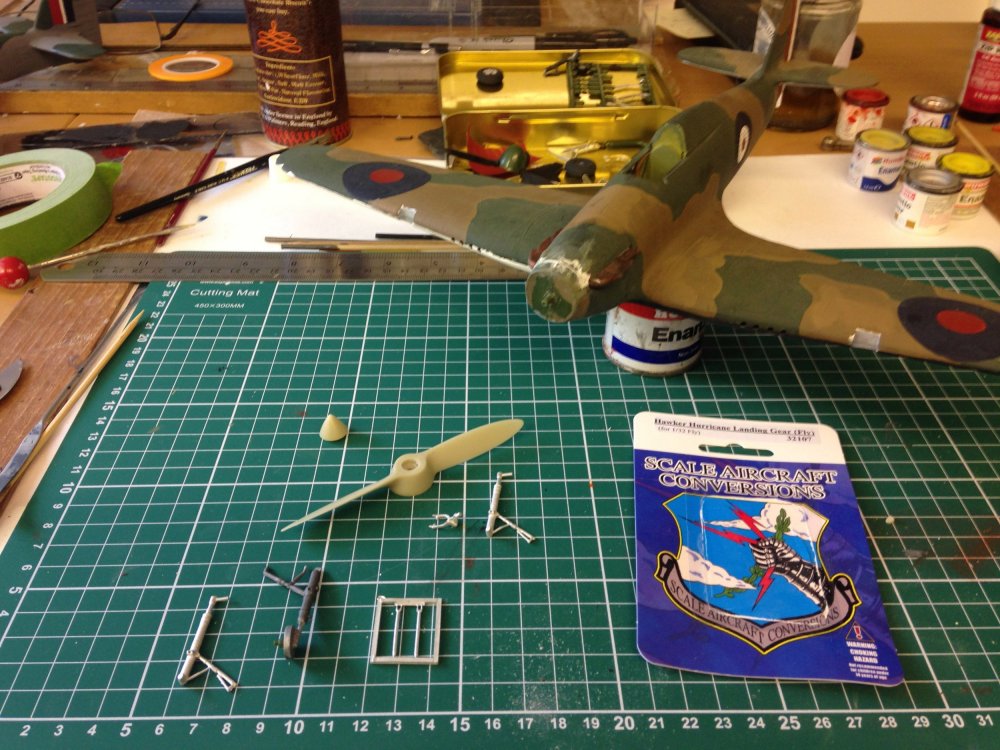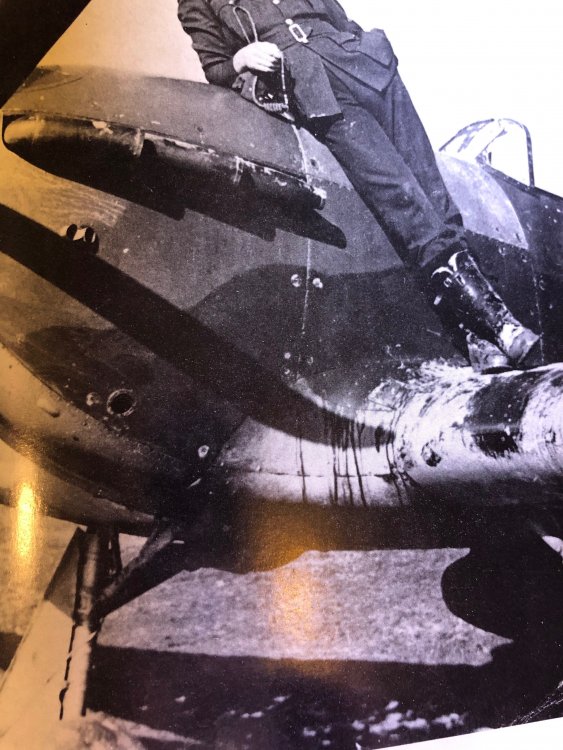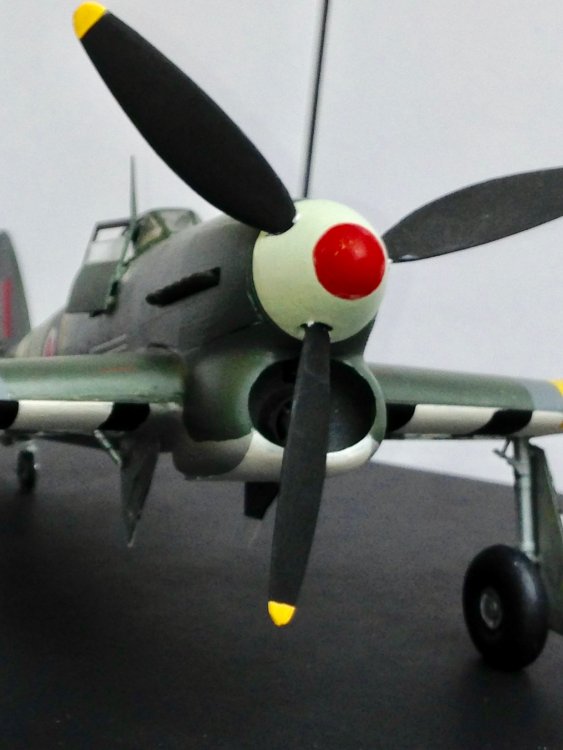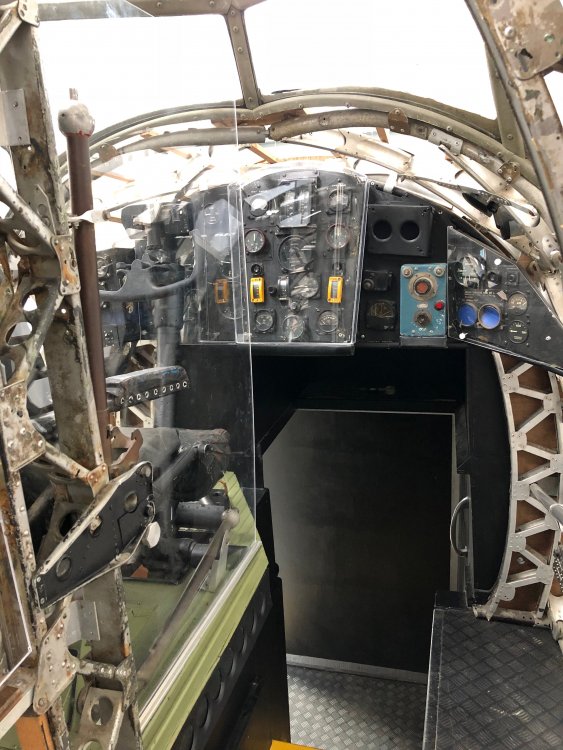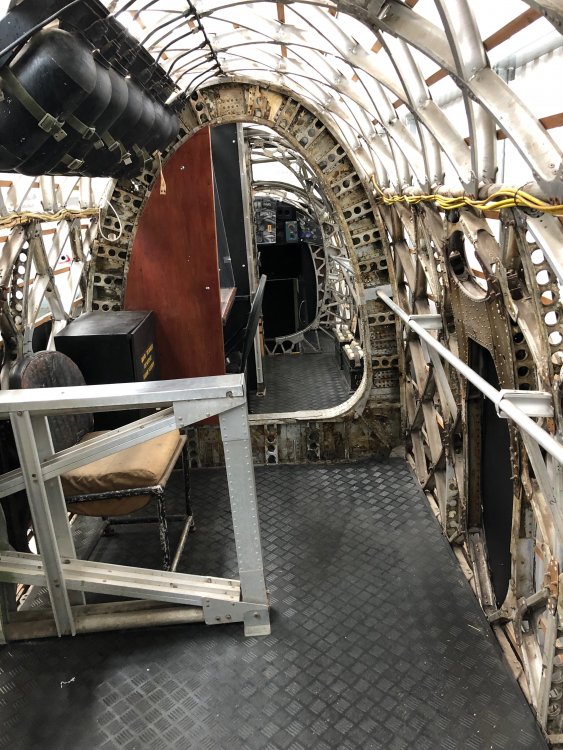-
Posts
15 -
Joined
-
Last visited
Content Type
Profiles
Forums
Events
Gallery
Everything posted by 224 Peter
-

1/32 Westland Whirlwind
224 Peter replied to JeroenPeters's topic in LSM 1/35 and Larger Work In Progress
In the end the Peregrine and its big brother the Vulture were terminated by RR because they needed to focus on developing the Merlin. Ultimately, they both were the end of the Kestrel line. -

1/32 Westland Whirlwind
224 Peter replied to JeroenPeters's topic in LSM 1/35 and Larger Work In Progress
I'm sticking to "out of the box"! The level of engineering in the radiator and aerodynamic flaps is impressive, especially when one realises the esign work dates from pre-war. Like the Avro Manchester, potentially amazing designs frustrated by the engine. What might the Whirlwind have become with a pair of RR Merlins? -

1/32 Westland Whirlwind
224 Peter replied to JeroenPeters's topic in LSM 1/35 and Larger Work In Progress
I discovered this build thread thanks to @B_Bogus on Britmodeller: I've just started building this kit and after reading the thread I'm much better informed. I'll tag along, if I may? My build is here: https://www.britmodeller.com/forums/index.php?/topic/235136642-westland-whirlwind-1/#comment-48951 -

special hobby 1:32 Westland Whirlwind F Mk.1
224 Peter replied to James H's topic in Aircraft Reviews
Neil Robinson has written an excellent Wingleader photo archive of this wonderful kit. (Archive 19). The photo captions make the book essential support material to anyone building this kit. I bought the kit when it came out, it has just migrated to the top of the stash.....like everyone hear I've wanted a large scale Lightning since building the original Airfix kit. I don't know why, but the Whirlwind has "something".. Yes, it is a brave tooling for an aircraft that never really made a big mark, probably because the Mosquito could do everything the Whirlwind could do and it used the Merlin, not the Peregrine which Rolls Royce felt had reached the end of its life. The kit has some issues, the lack of positionable flaps being the main one and yes, the armour on the wing tanks looks overdone. But overall it looks fine! -
This is the second... Boscombe Down Aviation Collection. I spend a day a week there and also help out by organising the monthly lectures. PM me if you are interested.
-
This is one of my two distractions..... 2014 Morgan Plus Eight. 4.8L naturally aspirated V8, auto box, paddle shift. 372 bhp, weighs 1240kg = quite quick. Glued aluminium chassis, wooden and aluminium coach built body, full independent suspension, LSD, full leather interior, heated seats, A/C, power steering, etc, etc. So it is comfortable too. Looks Classic, electro-mechanically it is modern.
-

Airfix is planning new Hellcat in 1/24 !
224 Peter replied to Martinnfb's topic in Modelling Discussion
Mine is on the workbench in front of me. Where do I start? I think I'll jump in with the engine, then go back to the beginning..... -

1/32 Lancaster build and improvements
224 Peter replied to NigelR32's topic in LSM 1/35 and Larger Work In Progress
Found this... https://www.haraldjoergens.com/panoramas/lancaster/ Fascinating! Almost as good as a walk round. -

1/32 Lancaster build and improvements
224 Peter replied to NigelR32's topic in LSM 1/35 and Larger Work In Progress
Update: I'm uncertain about the colour of the surrounds for some of the instrument and switches. I've just got a copy of Lancaster, by Dan Patterson, it features photos of the BBMF Lancaster in 1996. According to many on the Engineers Panel the top row of vertical gauges are black, the next row, oil temperature are yellow edged, the next row the water temperature are blue. The BBMF A/C has dark brown top row (bakalite??), then yellow, then black, not blue. On the Main panel the engine panel has red edges to the boost gauges, lower to the right the feathering controls are red edges, black buttons. Below them ate 4 engine cut off buttons under red lift up flaps. Of course, there is no real evidence that the BBMF panels in 1996, when the photos were taken are as a newish 1944 Lancaster. -

1/32 Lancaster build and improvements
224 Peter replied to NigelR32's topic in LSM 1/35 and Larger Work In Progress
Nige, I've watched all the Videos of Just Jayne, looked at far too many cockpit photos of museum aircraft. I've also studied the WNW images. Conclusions: there are differences between aircraft, due to manufacturing site, service use, inservice refits and age related restoration. The HK model is reasonably representative, but the pilots seat plinth should be as you have depicted it. Well Done and thanks for all your work!! I'll continue my research, the kit is in the box and I'll get to it in the autumn. It will be my winter project. When the WNW kit arrives I may make their forward cockpit, I've thought about using the HK clear forward fuselage... -
Long long ago in 1973 I went, as an exchange student, to Houston TX. I took some basic modelling tools and tins of Humbrol paint. There I purchased the then new Revell Hurricane and made a start. Returning home in September I carried on, painting the camouflage and RAF roundels, using a spring bow compass and paint, intending to finish the aircraft as one of the aircraft flown in France, based on a photo in "Fighter Pilot": I have a copy of the original 1942 publication in hardback, heavily censored: no mention of the Squadron, the names of the officers or anything much else! So, move on to 2018 and retirement: I came across a 1990 edition the same book, by Paul Richey DFC and with much more information about the aircraft of 1 Squadron and 73 Squadron. Richie flew JX G, which as late as April 1940 was sporting a 2 blade Watts propeller - which broke up and fell off at 20,000 over Metz.... Other photographs from April 1940 show it with full height RAF colours on the rudder, and only the letter G, the squadron codes had been painted over, along with the A/C Serial Number. In flight photos show that the deletion of squadron codes was not universal, in one of 73 squadron some show "TP" as the squadron code, others just have a single letter. All have 3 blade propellors and rudder flashes with one wing undersurface black, the other white.. So, a particular aircraft could have the 2 or 3 blade prop, squadron codes or just an identification letter. Time to re-start a stalled build, after 44 years. The first job was to finish the job: the Hurricane needed a partial repaint, but still a lot to do with filling and some details. I ordered 2 sets of after market parts, first white metal U/C legs, from Scale Aircraft Conversions, mostly because the original legs had become very fragile over time and the rear leg had "disappeared" and then a Watts propellor from Brian Fawcett, intended for the PCM kit but will work on the Revell one. The prop is a delight, beautifully moulded from resin. This photo shows both and the Hurricane in the background. I've got the U/C attached, prop fitted and "all" that is needed now is some further paint touch up, landing lights fitted and the canopy painted and finally the letter S applied in light aircraft grey. S was flown by Peter Prosser Hanks, a brilliant pilot who survived the war. There is an excellent photo of his aircraft, with a 2 blade prop, coming in to land at Vassincourt airfield. I've also found that there are some very conspicuous details on the nose of these early Hurricanes, as this next photo shows... the detail is so obvious that I have to add it. But I've never seen the two small pipes below the exhaust manifold, anyone know? The photo shows how muddy and scruffy these aircraft were, operating from grass airfields in France. So some less than subtle weathering will be needed! The next photo will be off the finished model... next year!
-
Thanks, everyone, for the kindly reception... I'll be around regularly until the spring when I tend to spend time in the garden and out in our Morgan. For me, modelling is a seasonal obsession.... Peter
-
Well, I never give up....or throw anything away. Also, I'm better at starting than finishing.... Here is the old Revell Typhoon.....
-
Just signed up after lurking for a while...so I thought I'd introduce myself... I've been making kits since I was about 11... joined IPMS long ago: my membership number is 224..... hence 224 Peter! Model making tailed off somewhat in the mid 80s when children arrived, has a brief flicker in the late 90s but now, with retirement, I'm back to where I was in about 1979... I've always been tempted by large scale models, 1/48th, 1/32nd and then 1/24th when Airfix introduced them. Although my modelling dried up, kit buying didn't: I have a stash that should keep me active for years. This year I finished the Revell "car door" Typhoon, started in 1973 and the Revell Beaufighter started in 1974. I'm presently working on finishing the Revell Hurricane, started in 1972 and the Airfix Harrier: this is a conversion to the FGR 3 that was detailed by Alan Hall shortly after the big harrier came out. I'm also finishing the Matchbox Spitfire F22, what a terrible kit. I've fitted a resin nose, Brassin U/C legs and applied a lot of filler.... Photos soon. I'm also doing a "What If" Grumman F14 J, the one bought by the RAF after the F111 was cancelled. So it is in Desert Storm "pink". The next challenge is to finish the Revell Hunter, started in 1999.....and the Airfix 1/24th Ju87 started when it came out...to add to that challenge it has to be a captured one in RAF markings! When all that is done I can start something new, from the stash.... probably the Airfix 1/24th Typhoon. Making these old kits makes me realise just how far the tool makers art has progresses. The Matchbox kits are crude, compared with the later 1990s kits and when compared with the new 1/48th Airfix Blenheim... chalk and cheese. Now we have the ability to research information, buy from the internet and talk with fellow modellers undreamt of back in the 70s... I am starting to learn to paint with an airbrush, use resin, PE, etc. Always something new to discover. Some may have seen me post on "another" forum, but I feel that this place, with its focus on big kits, is more "me"..... Cheers, Peter
-

1/48 Wellington Mk.X (He727 NA-K)
224 Peter replied to JeroenPeters's topic in LSM 1/35 and Larger Work In Progress
I'm new here, making nothing smaller than 1/48th, but mostly 1/32 and the occasional 1/24th...... At the Brooklands museum they have 2 wellingtons, one complete and not open to the public, but also a fuselage, un-covered, that is open and mostly complete with internal fittings. I'd have posted this earlier.... Hope this retrospective helps!! Peter- 304 replies
-
- 4
-

-
- wilnis crash
- trumpeter
-
(and 1 more)
Tagged with:



